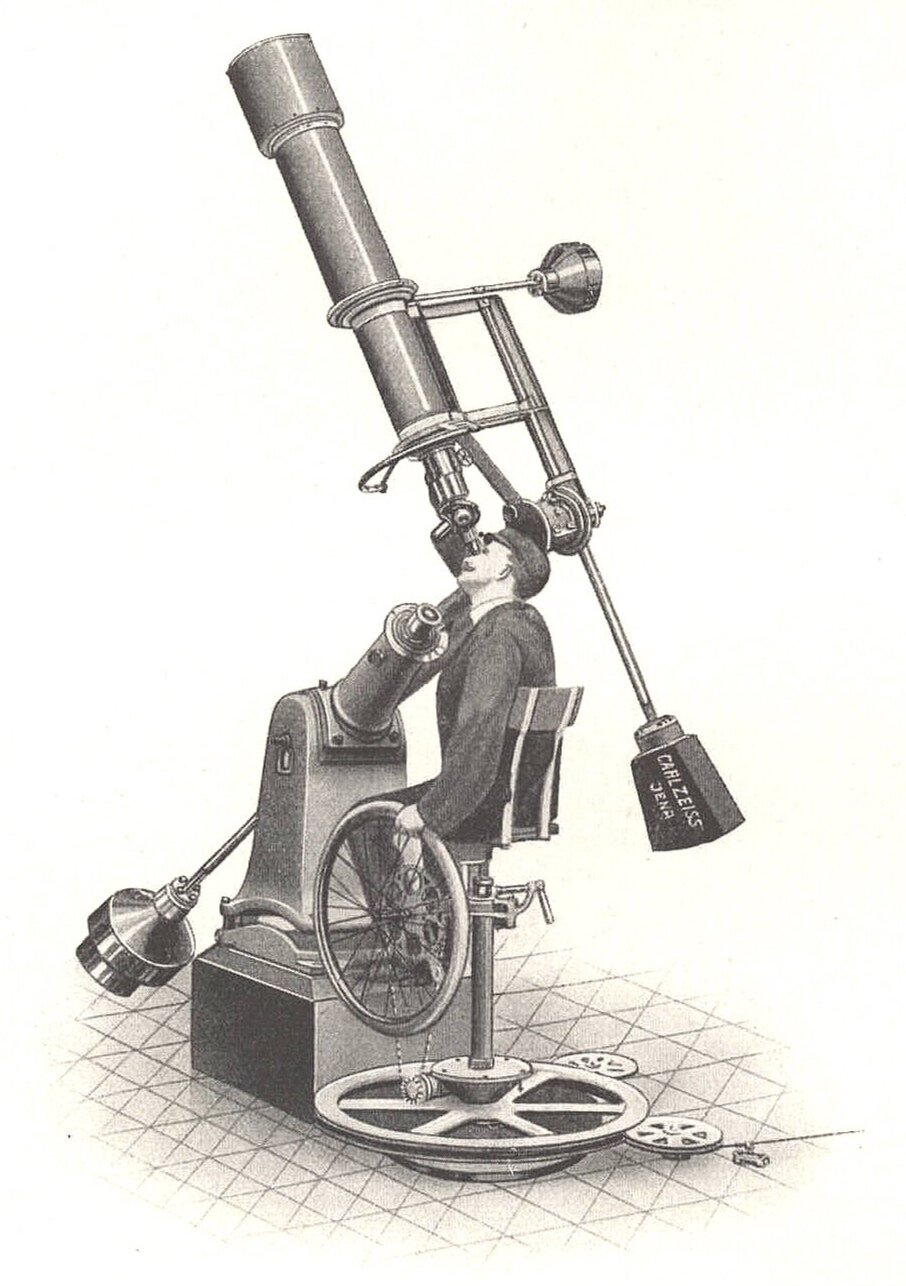THE ASTRONOMER’S CHAIR
A Visual and Cultural History
The Astronomer’s Chair offers the first cultural history of seat-furniture in science. It analyzes 19th-century adjustable observing chairs for telescopes, linking their design and imagery to broader bourgeois, imperial, and racial ideologies. The book argues that these chairs were not merely functional but were embedded in a **moral economy of posture**, where a specific seated stance represented Western masculine science as both comfortable and civilized. This posture was defined in opposition to depictions of cross-legged “Oriental” astronomers, which for Western audiences signified a primitive form of scientific labor. By connecting visual and material culture, the study reveals how assumptions about gender, race, and empire became physically built into scientific tools. It concludes by extending this framework to reinterpret 20th-century objects, like Freud’s couch, thereby decolonizing the hidden histories of scientific furniture and its enduring impact.
Reviews
“Drawing on rich, compelling sources, The Astronomer’s Chair is an original, provocative, and fascinating work.”
—David Kaiser, Germeshausen Professor of the History of Science, MIT
“This creatively illustrated study by an eminent historian uses a seemingly mundane theme, depictions of astronomers’ seating, to reveal with startling insight and expert craft the complex cultures of comfort, attention, and discipline that governed nineteenth-century stargazing.”
—Simon Schaffer, Professor of History of Science, University of Cambridge
“The Astronomer’s Chair takes us on an interdisciplinary journey through the history of science, design, imperialism, and material culture. With this book, Omar Nasim models thrilling new directions in intellectual inquiry.”
—Aviva Briefel, Edward Little Professor of the English Language and Literature and Cinema Studies, Bowdoin College
“A fascinating book that underscores how, in visual culture, it’s often pictures of those who explore science that best communicates the nature of their work.”
—Marvin Heiferman, curator and author of Seeing Science: How Photography Reveals the Universe
“The Astronomer’s Chair brings together disparate bodies of literature—from histories of fatigue science and hygiene to scholarship on decorative arts and postcolonial readings of Victorian travelogs—in a fluid and readable way. The book is beautifully illustrated, and Nasim has done an impressive job tracing the history of specific astronomers’ chairs back to their design and workshop production, the kind of object-based research that is often hampered by incomplete archives. It is an excellent example of the kinds of insights that can result from an interdisciplinary cultural history and illustrates how looking at mundane objects can reveal illuminating entanglements between science and society more broadly. I can also imagine this book being a useful teaching tool on a variety of subjects, particularly for teaching students to combine close reading and visual analysis, showing them that scientists are “products of their culture” and not isolated from the social worlds of which they are a part .”
—Sarah Pickman in H-Material-Culture, H-Net Reviews.


